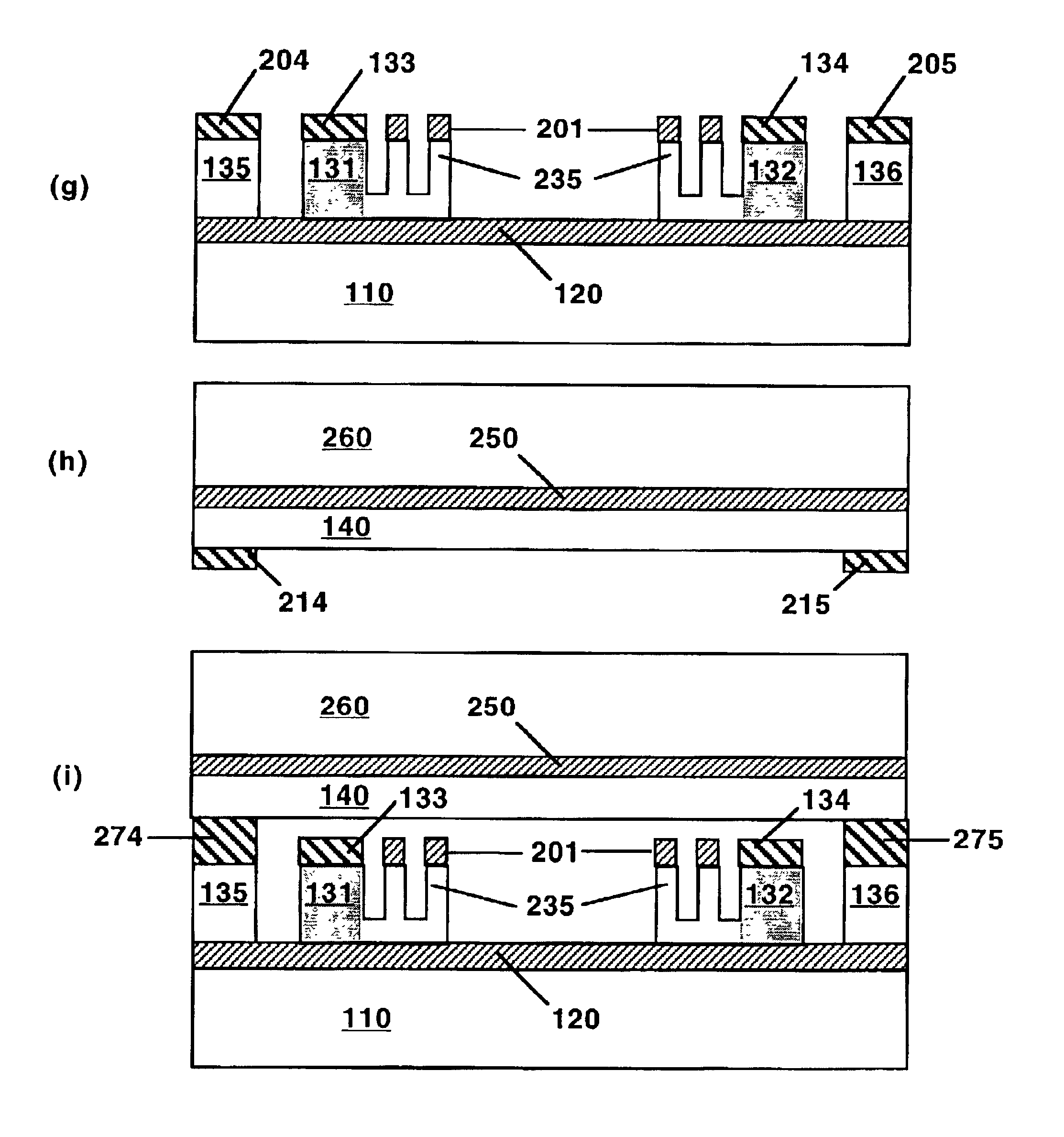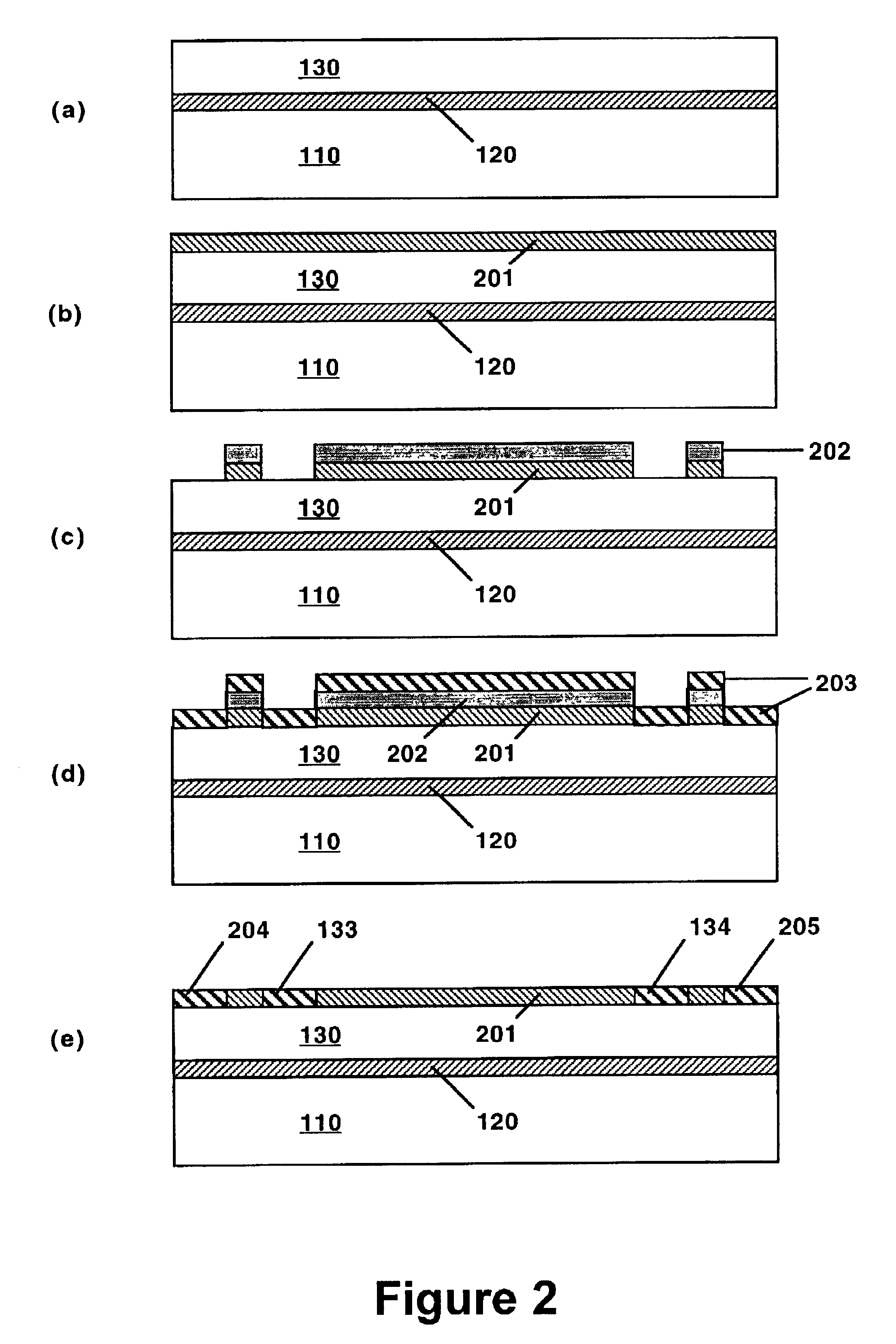Process for high yield fabrication of MEMS devices
a technology of mems devices and fabrication processes, which is applied in the direction of photomechanical devices, soldering devices, instruments, etc., can solve the problems of reducing the yield of etching devices, reducing the etching accuracy and device yield, and requiring the use of thicker photoresists with reduced feature resolution, so as to achieve exceptionally precise layer to layer alignment of device components, the effect of reducing the thickness of the silicon device layer
- Summary
- Abstract
- Description
- Claims
- Application Information
AI Technical Summary
Benefits of technology
Problems solved by technology
Method used
Image
Examples
Embodiment Construction
Terminology used in this document is generally the same as that used in the art. Patterning typically involves applying a thin layer of photoresist, exposing the photoresist to radiation through a mask having a predetermined pattern, and dissolving the uncured photoresist in a solvent so as to permit removal of the underlying substrate material, usually by etching. The photoresist may be negative (cured by exposure to radiation) or positive (degraded by exposure to radiation), and may be applied as a liquid by spraying, dipping or spin coating, for example, or as a dry film. As known to those skilled in the art, MEMS fabrication typically involves anisotropic etching of single crystal silicon wafers using silicon oxide as an etch stop, or as an etch resistant layer to prevent etching of underlying silicon. Silicon etching may be performed by wet chemical methods or dry methods (plasma etching, for example). Depending on the etching conditions, silicon or silicon oxide may be selecti...
PUM
| Property | Measurement | Unit |
|---|---|---|
| diameter | aaaaa | aaaaa |
| thick | aaaaa | aaaaa |
| thick | aaaaa | aaaaa |
Abstract
Description
Claims
Application Information
 Login to View More
Login to View More - R&D
- Intellectual Property
- Life Sciences
- Materials
- Tech Scout
- Unparalleled Data Quality
- Higher Quality Content
- 60% Fewer Hallucinations
Browse by: Latest US Patents, China's latest patents, Technical Efficacy Thesaurus, Application Domain, Technology Topic, Popular Technical Reports.
© 2025 PatSnap. All rights reserved.Legal|Privacy policy|Modern Slavery Act Transparency Statement|Sitemap|About US| Contact US: help@patsnap.com



